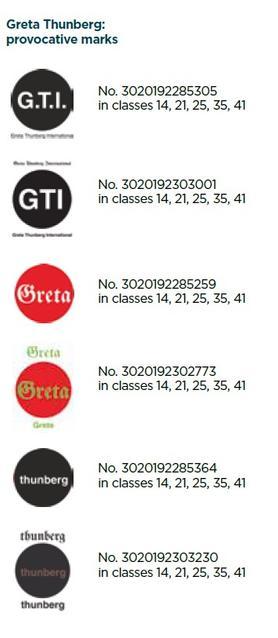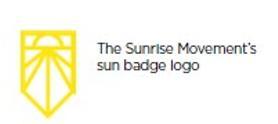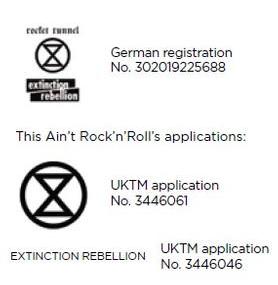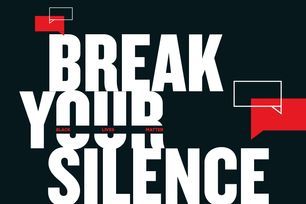A call to action
Allister McManus issues an IP wake-up call to some well-known environmental activist groups.

Following the release of a damning report by the Intergovernmental Panel on Climate Change in 2018, plus a fresh wave of reporting of scientific markers that tell us our planet is on a dangerous warming trajectory, there has been a significant acceleration in organised environmental campaigning in recent years. A number of environmental activist groups have started claiming a place in our news cycle.
But as these organisations begin to take up more space in our Twitter feeds, how are they protecting their brands both from appropriation and attack?
Thunberg takes action

The importance of this question is highlighted by the recent issues that Swedish activist Greta Thunberg has had with unauthorised third-party trade mark applications in Germany for a number of marks. Fortunately, these applications are now all marked as withdrawn on the German Patent and Trademark Office’s database, which seems to indicate that Thunberg and her legal team were able to take the appropriate action.
Thunberg has since filed three EU trade mark (EUTM) applications in the name of “Stiftelsen The Greta Thunberg and Beata Ernman Foundation”. These were registered on 22nd May 2020 and cover classes 35, 36, 41 and 42 (“advertising, business management”, “fundraising services for the promotion of public awareness of environmental issues”, “education services” and “scientific research services”) for: EUTM No. 018171377, Greta Thunberg; EUTM No. 018171380, FRIDAYS FOR FUTURE; and EUTM No. 018171383, SKOLSTREJK FÖR KLIMATET.
Stiftelsen The Greta Thunberg and Beata Ernman Foundation subsequently filed an international application for the FRIDAYS FOR FUTURE mark on 15th June 2020, based on EUTM application No. 018171380. The international application designates Australia, Canada, India, Japan, Norway, Russia, Switzerland and the US. Clearly, Greta and co. are no longer wasting time when it comes to trade mark protection.
But what other campaigning organisations have taken steps towards trade mark registration?
Extinction Rebellion

The well-known environmental campaigning group Extinction Rebellion (XR) has also experienced problems with unauthorised third-party applications – for example, a German registration No. 302019225688. This registration is now marked as cancelled, so it would appear that XR was able to deal with the issue via the German trade mark cancellation process.
However, of further concern to the XR brand is unauthorised use by eco-fascists on posters promoting racism and false affiliation with the XR movement by incorporating XR brand elements. This has included the appearance of imposter stickers incorporating XR-linked typography and its logos that suggest that the group sees COVID-19 as a solution to climate change.

The XR movement, founded in the UK in May 2018, has expanded rapidly and received notable media attention in the wake of its ongoing “rebellions” around the world. Its stated aim is to use non-violent civil disobedience to compel government action to avoid reaching tipping points in the climate system, biodiversity loss and the risk of social and ecological collapse.
XR’s most recognisable branding element is the “circled hourglass”, known as the extinction symbol, which serves as a warning that time is rapidly running out for many species. As a means of capturing public attention, XR’s co-ordinated branding design is striking and effective. However, despite its highly protectable brand elements, the UK, EU and US trade mark position for XR is pretty dire – in fact, it’s virtually non-existent.
This is perhaps partly from necessity. The extinction symbol was created by London-based artist ESP in 2011, and on the website extinctionsymbol.info, the artwork is available for non-commercial use. There, it is explained that use “by individuals in their personal artwork or other forms of expression is strongly welcomed and encouraged”, but this comes with the proviso that any form of commercial use is completely against the symbol’s ethos and should be refrained from.
Nonetheless, it is interesting that two UK trade mark (UKTM) applications relating to the XR movement were filed on 21st November 2019 by London-based design studio This Ain’t Rock’n’Roll Ltd, which has been at the helm of XR’s Extinction Rebellion Art Group, creating the recognisable and striking graphics for the movement. These are UKTM application No. 3446061 for the “circled hourglass”/“extinction symbol” in classes 9, 14, 18, 25 and 26, which was opposed on 6th March 2020 and withdrawn on 6th April 2020, and UKTM application No. 3446046 for EXTINCTION REBELLION in classes 9, 14, 18, 25 and 26.
The remaining pending UKTM application for EXTINCTION REBELLION was opposed on 20th January 2020 by Jason and Christopher Kingsley, founders of multimedia games studio Rebellion. The UK IPO website indicates that the opposition proceedings are currently in the evidence rounds, and the period of disruption caused by the COVID-19 pandemic may have extended the original deadlines for these proceedings. The application covers class 9 for “magnetic badges”, class 14 for “metal badges for wear [precious metal]”, class 18 for “bags; luggage… wallets”, class 25 for “clothing; footwear; headgear” and class 26 for “button badges; embroidered badges; buttons… novelty buttons [badges] for wear”.
Considering that there are differences between EXTINCTION REBELLION and REBELLION, and that the XR movement clearly operates in a different field to the Rebellion studio, settlement via coexistence would seem to be a better option than protracted opposition proceedings.
The XR situation also illustrates a potential issue when it comes to trade mark protection for environmental campaign groups. Who will own the trade mark registrations? By their very nature, these are collective, grassroots movements that are primarily sustained by the involvement and activities of their members, but they can quickly become worldwide concerns. In some cases, this may make it difficult for the name and branding to be easily identifiable as belonging to a single legal entity.
The traditional concept of IP protection may be at odds with an environmental group’s free-spirited attitude and how the movement operates and organises, particularly where it is explicitly non-hierarchical. For example, at the bottom of the XR website homepage, there is the following “copyright info”:
“Extinction Rebellion (XR) is a do-it-together movement. All our design and artwork can be used non-commercially for the purpose of planet saving. This does not mean creating merchandise for fundraising or sending XR a percentage of your sales. We do not endorse or create any merchandise and we will pursue and prosecute anyone who does. The extinction symbol was designed in 2011 by street artist ESP, who loans XR usage on the same basis”.
Arguably, this approach does not sit comfortably with the traditional concept of trade mark protection and enforcement, which usually involves strict control when it comes to allowing third-party use of branding elements. This statement is also contradicted by UKTM application No. 3446046 for EXTINCTION REBELLION, which clearly covers various merchandising items such as clothing and novelty badges.
However, attitudes within the movement may have had to change in order to preserve the integrity of the movement’s image, which risks harm by unauthorised third-party use/exploitation. Nonetheless, it’s clear that XR’s lack of trade mark protection for its full name and “circled hourglass” leave it open to exploitation by third parties until a protection and enforcement strategy is in place.
The Sunrise Movement

For the Sunrise Movement group, the US appears to be its priority in terms of trade mark protection. No UK or EU applications/registrations have been located. However, there is a US registration No. 58 and 38782 (Serial No. 88272446) for SUNRISE MOVEMENT, owned by “Sunrise non-profit corporation”, filed on 23rd January 2019 and registered on 20th August 2019. The registration contains a class 35 specification covering “promoting public awareness of the need to make climate change an urgent political priority across the United States, to end the corrupting influence of fossil fuel executives on the country’s politics, and to elect leaders who stand up for the health and wellbeing of all people, by means of public advocacy”. Quite a mouthful.
In registering the word mark, the Sunrise Movement has taken the necessary first steps, but its website contains no branding guidelines. The movement uses a distinctive “sun badge” logo too, which it should also register as a trade mark.
Earth Strike

No UK, EU or US applications/registrations have been located for this group. Its website claims that it has endorsement from XR and “thousands of members in over 60 countries”. Presumably, either trade mark protection is not on the agenda for the Earth Strike movement, or perhaps local trade mark attorneys were also on strike at the time.
Much like XR, Earth Strike states that: “As long as [its] principles are followed, anyone is free to organise a local Earth Strike chapter and run it autonomously how they see fit”. The group is light on stand-out brand elements, although it uses a match and leaf logo, which would benefit from trade mark registration, in addition to protection for the Earth Strike name itself.
Fridays for Future
This organisation’s name has an interesting position on the EUTM register. Janine O’Keeffe, the organiser of Thunberg’s popular fridaysforfuture.org website, has recently registered an EUTM covering a broad but sensible range of goods and services for the mark FRIDAYS FOR FUTURE.
EUTM No. 018147674 was filed on 5th November 2019 and registered on 22nd May 2020 for classes 9 (“electronic publications; sound/video recordings; apps”, 16 (“printed matter”), 18 (“bags; rucksacks; purses; wallets”), 25 (“clothing; headwear; footwear”), 35 (“promotional services relating to awareness of social issues including climate change”), 41 (“provision of educational information relating to current events”), 42 (“research into climate change; advice and consultancy services relating to environmental issues”) and 45 (“providing information about political issues, public policy, and social issues in the fields of climate change and environmental issues”).
However, as discussed earlier, another registration for the identical trade mark (EUTM No. 018171380) is owned by Greta Thunberg’s “Stiftelsen The Greta Thunberg and Beata Ernman Foundation”, filed on 23rd December 2019 for classes 35 (“advertising; business management; advertising and other services to promote public awareness of environmental issues and initiatives”), 36 (“insurance; financial affairs; provision of charitable fundraising services in relation to the promotion of public awareness of environmental issues …”), 41 (“education and training relating to nature conservation and the environment”) and 42 (“providing scientific information in the field of climate change and global warming”).
It is not clear whether this is coincidental, and we can assume the parties did not engage in opposition proceedings, given their connection. However, two identical marks filed roughly a month apart by different owners for identical/similar goods and services in the same environmental arena is not ideal. A simple assignment from O’Keeffe to Thunberg’s foundation may be the better option.
Of further interest is the USPTO database, which lists an application for FRIDAYS FOR FUTURE (Serial No. 88343068) filed on 17th March 2019 by a German applicant, Gsoedl Michael DBA, for “T-shirts” in class 25, only to be abandoned on 3rd December 2019 for failure to respond to the US office action within the six-month deadline. This applicant does not appear to have any connection with either O’Keeffe or Thunberg. This emphasises the recurring problem of unaffiliated third-party applications for these types of marks, which may be more difficult to challenge without an existing registration.
Fire Drill Fridays

The website for Fire Drill Fridays claims inspiration from Greta Thunberg’s Fridays for Future movement and celebrity involvement from none other than the well-known actress Jane Fonda. The focus is on eradicating the need for fossil fuels, and taking that fight directly to the US Government and the President. No UK, EU or US applications/registrations have been located, and while there is plenty of online content and interviews about this organisation, not much stands out in the form of brand elements, aside from a figurative mark incorporating the name itself.
Mobilize Earth
This organisation burst onto the scene in January 2020, thanks to a film featuring Joaquin Phoenix and other famous names. While no UK or EU applications/registrations have been located, the USPTO database lists a registration (No. 4179127; Serial No. 85484056) for MOBILIZE THE EARTH, filed on 30th November 2011 and registered on 24th July 2012, in the name of Earth Day Network, Inc., a charitable corporation based in New York. The registration covers class 35 (“promoting public awareness of environmental matters”). However, the registration is marked as cancelled from 1st March 2019 because the registrant failed to file the required Declaration of Use within the six-year statutory period.
The organisation’s current website states that “Mobilize Earth is the public name of Project Earth 2025©, a non-profit organization working towards a thriving future for all. Now is the time to mobilize, to act as individuals, build bridges, find common ground, come together and demand action”. The organisation’s website includes reference to chosen “film partners”, which are XR and non-profit organisation Amazon Watch, and the site includes requests for donations to benefit those groups.
For a group taking such an interesting approach to campaigning, it is a shame that nothing appears to have been done to develop a trade mark portfolio.
The ideal strategy?
It is clear from the examples above that the one thing these groups have in common is the need for increased trade mark protection, more control over how content is used, clear brand usage guidelines and a sensible enforcement strategy.
For a good example of how to be an effective environmental campaign group and be IP-savvy at the same time, just look to the World Wildlife Fund (WWF) and its brand strategy. A simple review of its website illustrates the staggering degree of professionalism and control over its brand and content that the “world’s leading independent conservation organisation” has achieved. Of course, a healthy budget makes all the difference, but it is worth noting that the WWF website contains everything from branded merchandise to content for children to educate them on environmental issues such as climate change, deforestation and protecting species, all presented at various learning levels. There is even an “environmental footprint calculator”.
In terms of trade mark protection, the WWF, under the entity “WWF-World Wide Fund for Nature (formerly World Wildlife Fund)”, has filed around 231 UKTMs, 11 EUTMs and various USTMs, with a particular focus on its well-known panda bear logo. It even wrestled the former World Wrestling Federation into submission over the use of the WWF mark, forcing it to change its name to World Wrestling Entertainment.
This robust approach to trade marks has arguably not affected the WWF’s ability to produce a staggering number of climate change campaigns over the years, including evocative images of displaced seals sleeping on park benches and Tarzan swinging through a barren rainforest.
So while movements such as XR have made their position on the control and definition of their branding clear to supporters, there are still obvious weaknesses. In terms of overall strategy, XR’s brand is undoubtedly the most exposed and exploited of all the major environmental campaign groups.
Specifically, granting “autonomy” in relation to the use of its branding elements leaves XR open to abuse by eco-fascists and the like. The lack of registered protection for the key branding elements and the added complication that XR is not the original author of the extinction symbol will not help either.
Of course, for all of these groups, a consistent and measured brand enforcement strategy, use of trade mark watch notices to pick up on suspicious applications, and internet monitoring services to identify potential infringements would likely prove costly exercises and would impinge on their scarce resources. However, it would arguably be money well spent in terms of avoiding significant damage to their reputations, which would distract from their important messages on behalf of the planet.
More from September's magazine
Certification Marks: A crash course
Jasmine Sihre shares her tips for first-time filers.
Seeing scents
Francesco Simone believes an absurd conclusion was averted on appeal. R 1524/2019-2, The Procter & Gamble Company v Trademarks Solution Sp.zo.o. Sp.k., EUIPO, 28th May 2020
Break your silence
Everyone must be a proactive ally if we are to put an end to racism, writes Hannah Burrows.





